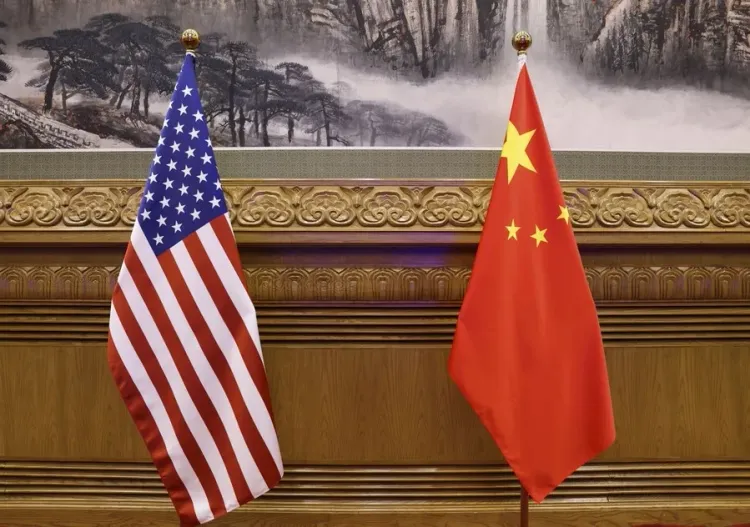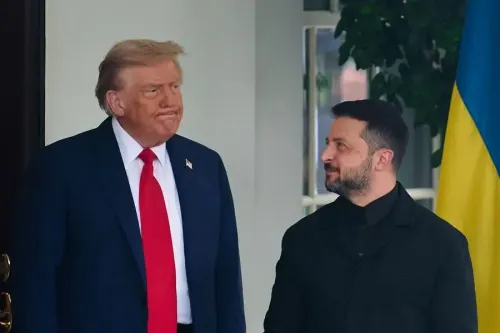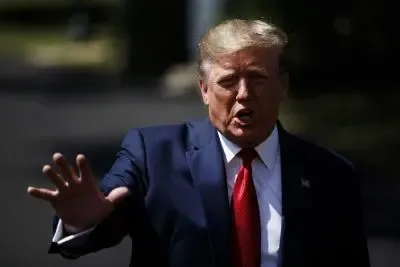Will Retaliatory Actions Escalate the Trade War Between the US and China?

Synopsis
Key Takeaways
- Renewed tariffs between the US and China could escalate economic tensions.
- China's dominance in the rare earth market is a critical factor in this conflict.
- Higher prices for electric vehicles and other technologies are anticipated.
- New export controls from both countries will impact technological exchanges.
- Global markets may experience instability as a result of these developments.
New Delhi, Oct 11 (NationPress) - Following a phase of relative tranquility, marked by four significant rounds of trade discussions between the United States and China since May, which included at least two instances of maintaining tariffs at previous levels (30 percent), a fresh tariff conflict is looming between the two largest economies in the world.
This escalation comes after US President Donald Trump announced a 100 percent additional tariff on Chinese imports in response to Beijing's implementation of new export controls on various rare earth elements.
In tandem, Trump has introduced new export limitations on vital software. While China had already imposed regulations on some rare earth exports, on October 9, it added five more elements. The commerce ministry stated that these measures are intended to protect national security and interests, including export controls on technologies related to rare earth mining, smelting, separation, manufacturing of magnetic materials, and recycling of rare earth secondary resources.
Six months prior, the ministry had declared export restrictions on seven medium and heavy rare-earth elements, requiring exporters to obtain licenses for these materials, which are essential for various high-tech applications, such as electric vehicles, defense systems, and renewable energy technologies.
China holds a dominant position in the rare earth market, accounting for roughly 90 percent of global refining capacity and a substantial part of mining production.
In retaliation, President Trump announced an additional tariff on all Chinese imports, raising the overall tariff burden to 130 percent, effective November 1.
The new export restrictions on US-made critical software will further tighten the technological exchanges between the two nations. Additionally, new service fees from the Office of the US Trade Representative will take effect on October 14, targeting Chinese-owned vessels and non-US-built vehicle carriers.
According to a statement from the government-controlled news outlet, People’s Daily, quoted on October 11, the commerce ministry accused the United States of overreaching the concept of national security and abusing export control measures, imposing extensive sanctions on numerous entities, including those from China.
The ministry emphasized that China's counteractions against the US's new port fees on Chinese ships are a legitimate defense aimed at ensuring a “fair competition environment” in the global shipping and shipbuilding sectors.
This new wave of tariffs raises questions about a potential fifth round of negotiations, which is anticipated when Trump attends the Leaders of the Asia-Pacific Economic Cooperation (APEC) summit in South Korea, where he is set to meet with Chinese President Xi Jinping.
Trump has already cast doubt on the necessity of the meeting, suggesting it might be canceled. The resurgence of the trade war has sent ripples through global markets.
A report from the Global Trade Research Initiative (GTRI) indicates that the new tariffs and export controls are likely to result in increased prices for electric vehicles, wind turbines, and semiconductors, as supply chains scramble to adapt.
Economists have cautioned that this escalation could initiate a global stagflationary cycle, particularly if other nations are compelled to take sides or introduce their own countermeasures.
“The impact will be felt swiftly,” states the GTRI report. “Prices for EVs, wind turbines, and semiconductor components are expected to rise, while the US will seek alternatives from India, Vietnam, and Mexico.









